All Science
 How big will Lake Erie's algae bloom be this summer?
How big will Lake Erie's algae bloom be this summer?Researchers in northern Ohio are predicting a significant bloom of toxic blue-green algae this summer, but they add that it will not be as large as the record-setting 2011 bloom.
- Could North America's largest salamander go extinct?
Following an assessment by the US Fish and Wildlife Service, the eastern hellbender, a two-foot long aquatic salamander, could be added to the federal list of endangered species.
 Did Buzz Aldrin really see a UFO? Technically, yes.
Did Buzz Aldrin really see a UFO? Technically, yes.On NASA's famed Apollo 11 mission to the moon, astronaut Buzz Aldrin said he spotted a light traveling alongside his spacecraft. In a very narrow sense of the term, the light qualified as a UFO.
 In Alaska, a spectacular trove of dinosaur footprints
In Alaska, a spectacular trove of dinosaur footprintsHerds of duck-billed dinosaurs in what is today Alaska's Denali National Park left behind 'one of the great track sites of the world.'
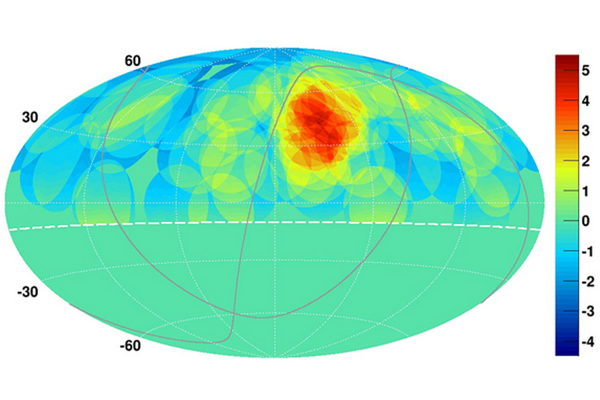 Where do cosmic rays come from? The answer could be in the Big Dipper.
Where do cosmic rays come from? The answer could be in the Big Dipper.Researchers discovered a hotspot of high-energy particles that could offer clues about origin of cosmic rays.
 How dusty is the Milky Way? 3D map shows galactic grime.
How dusty is the Milky Way? 3D map shows galactic grime.A new colorful map reveals in detail the galactic dust that permeates our galaxy.
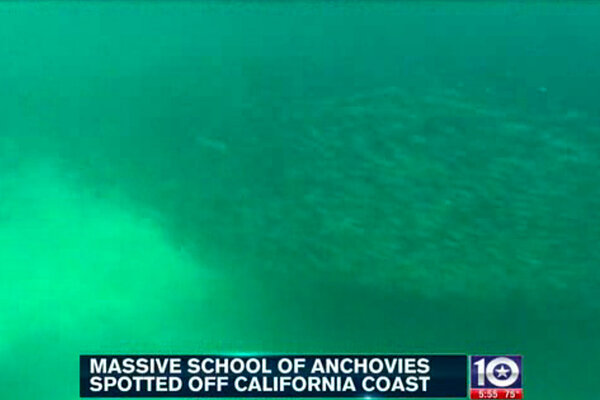 Humongous school of anchovies swarmed California coastline
Humongous school of anchovies swarmed California coastlineOceanographers spotted a dark, swirling mass in shallow waters off the coast of San Diego. It wasn't a red tide or an oil spill, but a massive school of anchovies.
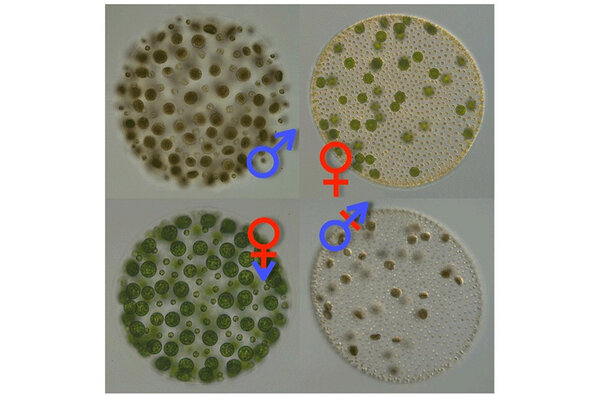 Where did the differences between males and females come from? Algae hold clues.
Where did the differences between males and females come from? Algae hold clues.A single gene in a multicellular alga could offer clues for the genetic origins of the sexes.
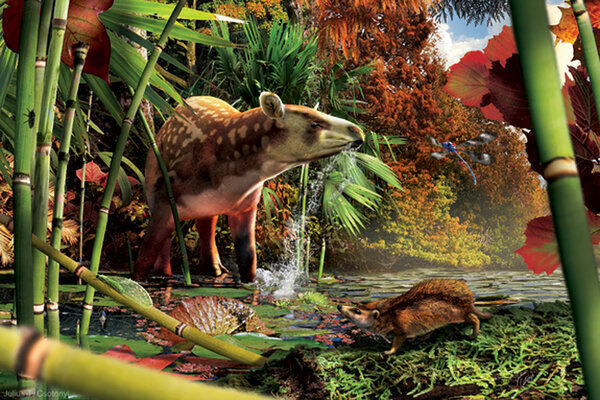 British Columbia was once home to tiny hedgehogs, say scientists
British Columbia was once home to tiny hedgehogs, say scientistsA fossil site in British Columbia has yielded its first ancient mammals, including a miniature tapir and a hedgehog smaller than a mouse.
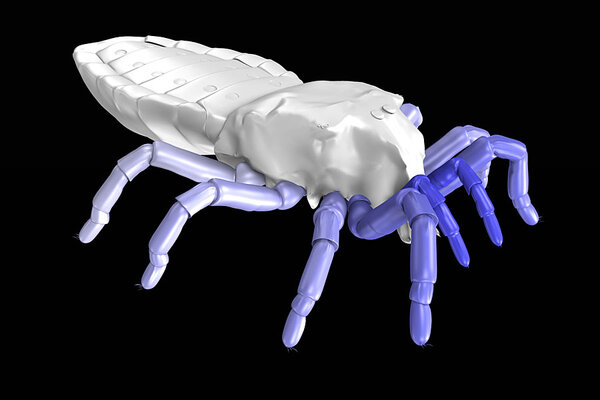 How scientists got a 410-million-year-old arachnid to walk again
How scientists got a 410-million-year-old arachnid to walk againResearchers used fossils of an ancient arachnid to create a video simulating how the creature may have moved.
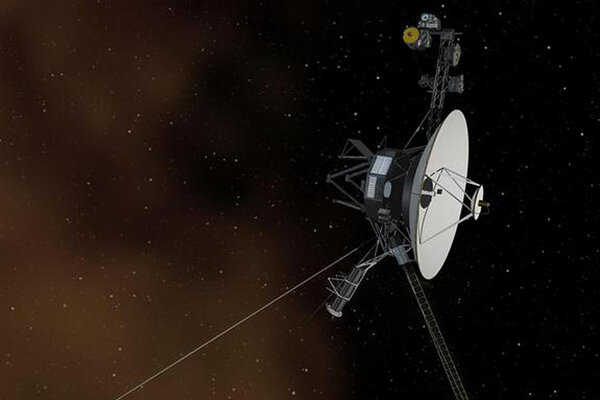 It's official: Voyager 1 is in interstellar space, says NASA
It's official: Voyager 1 is in interstellar space, says NASAData from Voyager 1 indicates that the spacecraft has exited the heliosphere, a bubble of plasma blown out by the sun.
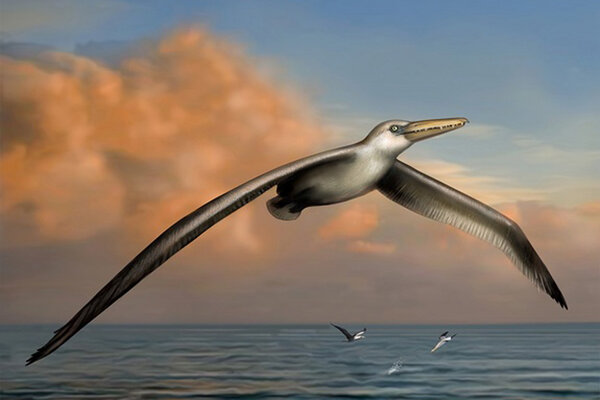 Largest flying bird ever had a wingspan of at least 20 feet, say scientists
Largest flying bird ever had a wingspan of at least 20 feet, say scientistsPelagornis sandersi's size exceeds some predictions of the maximum size for flying birds, note researchers.
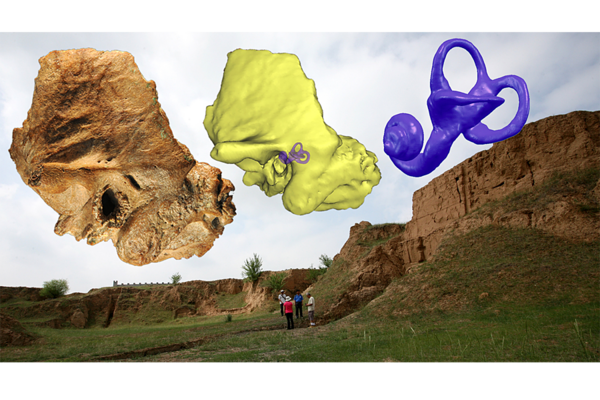 Neanderthal ear turns up in unexpected place, muddling evolutionary picture
Neanderthal ear turns up in unexpected place, muddling evolutionary pictureA distinct inner ear bone formation thought to be unique to Neanderthals has turned up in a very different sort of ancient human found in China.
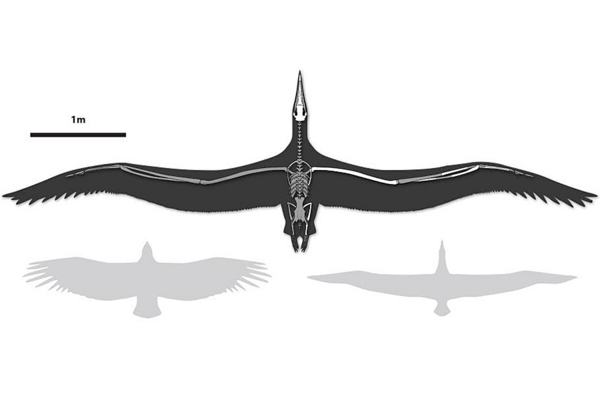 Biggest flying bird ever: How did it get off the ground?
Biggest flying bird ever: How did it get off the ground?A new fossil, Pelagornis sandersi, may have had the largest wingspan of any flying bird to exist, according to researchers. Once in the air, the humungous bird glided on air currents.
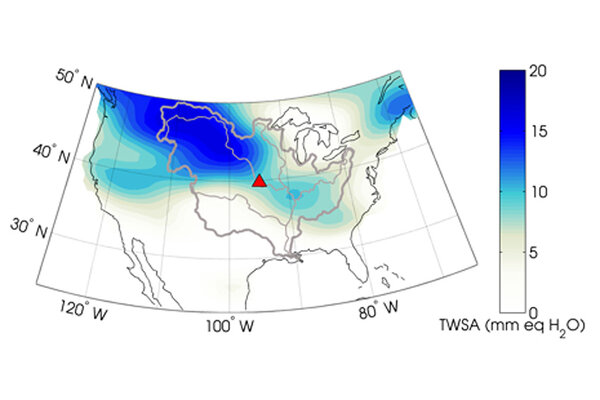 Can we predict floods from space?
Can we predict floods from space?Using satellite data of how much water is stored in river basins, researchers say they have determined a new way to predict which rivers are likely to flood.
 Ocean on Saturn's moon could be as salty as Dead Sea, say scientists
Ocean on Saturn's moon could be as salty as Dead Sea, say scientistsGravity data gathered by NASA's Cassini probe suggests that the subsurface ocean of Saturn's largest moon, Titan, has a remarkably high concentration of dissolved salts.
- Silicon Valley construction site yields treasure trove of fossils
More than 500 marine fossils, including giant shark teeth and portions of a whale skeleton, have been unearthed at the Calaveras Dam project in Fremont, Calif.
 Tibetans inherited high-altitude gene from extinct human lineage, say scientists
Tibetans inherited high-altitude gene from extinct human lineage, say scientistsTibetans are adapted to rarefied air thanks to a gene passed down from the Denisovans, a group of extinct humans markedly distinct from our own species.
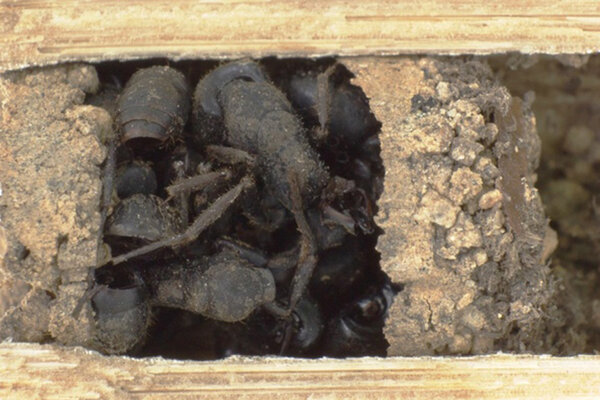 New wasp species has a lot of exoskeletons in the closet, say scientists
New wasp species has a lot of exoskeletons in the closet, say scientistsThe bone-house wasp, a newly discovered species, defends its home by stuffing ant corpses into its walls, researchers report.
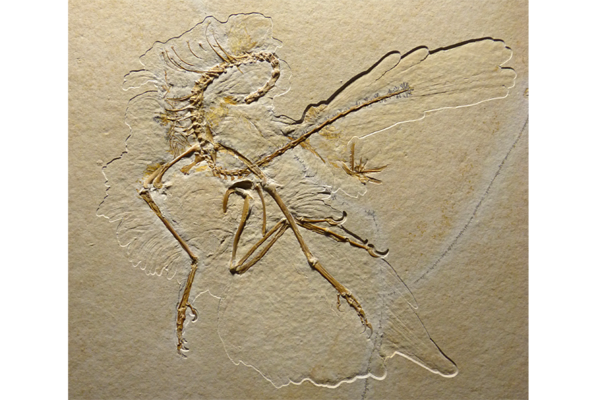 Prehistoric dino-bird wore feathery pants, say scientists. But why?
Prehistoric dino-bird wore feathery pants, say scientists. But why?A new fossil of an early bird, Archaeopteryx, displays evidence of long feathers around the animal's legs, researchers say. But these feathers may not have been for flight.





















